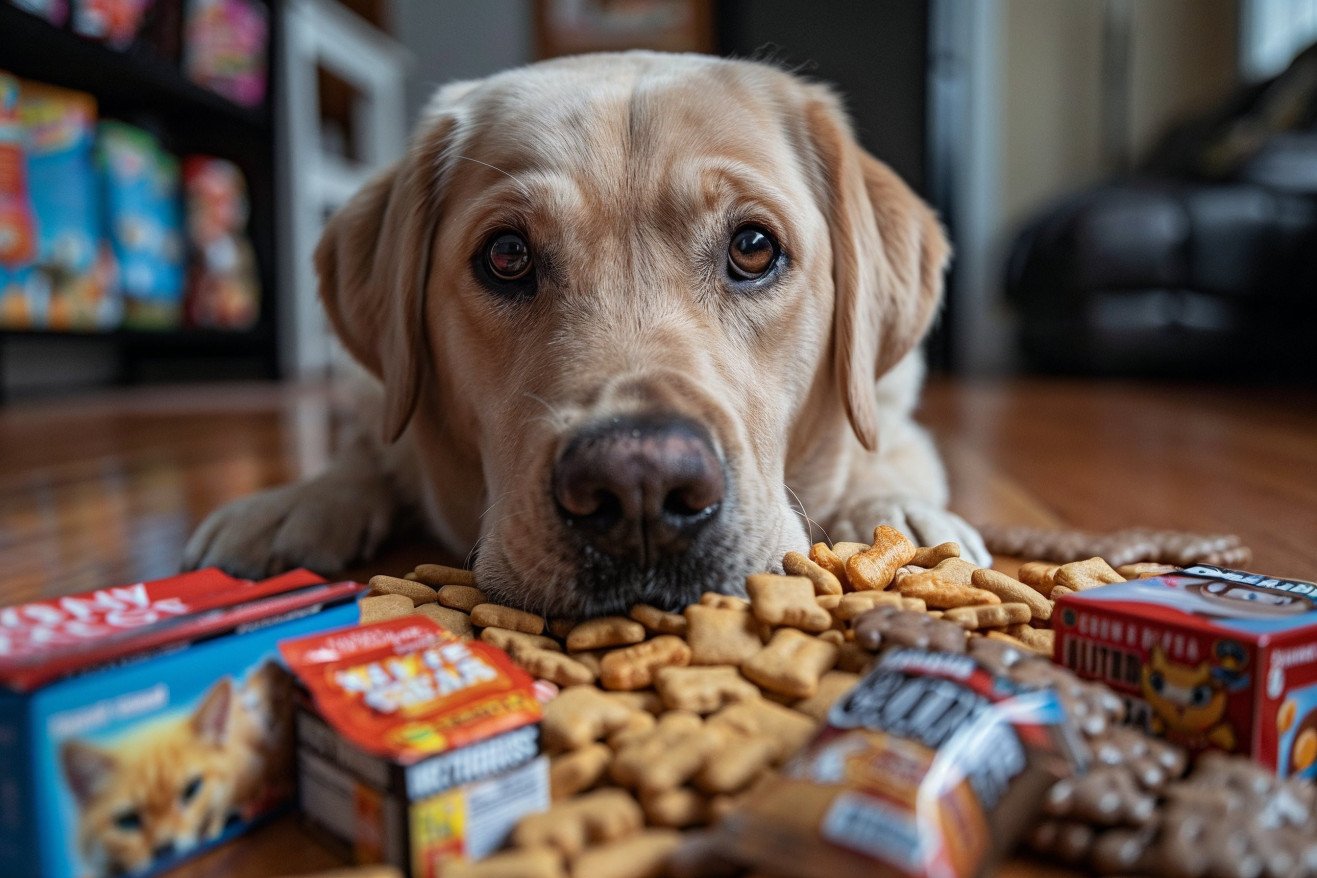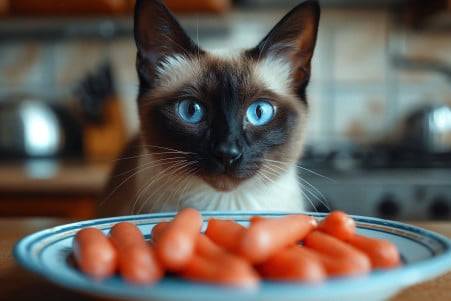Can Dogs Eat Cat Treats? Vet-Approved Guidelines
5 April 2024 • Updated 4 April 2024

Cat treats are often full of flavors and other things that are harmful to dogs, but there are some exceptions that may surprise you – let's talk about when it's okay for your dog to eat these treats. Dogs can eat some cat treats in moderation, but many contain ingredients that are not good for dogs. The high levels of plant proteins and lack of taurine in cat treats can lead to nutritional deficiencies in dogs. However, plain cooked chicken or fish-based cat treats can make an occasional safe snack.
We'll go over the advice of vets when it comes to what dogs should eat and what ingredients in cat treats should be avoided at all costs. This advice, along with the FDA's rules and regulations for pet food, will help us understand the line between what is and isn't okay to share with our pets, whether it's human food or treats from another animal. By understanding the nutritional needs of our pets, you'll be able to make better decisions about what's okay to feed them.
Can dogs eat cat treats?
Nutritional Differences: Why Cat Treats Aren't Ideal for Dogs
Cats are obligate carnivores, which means they have very different nutritional requirements than dogs, who are omnivores. Because they are strict carnivores, cats need more protein than dogs and require 2-3 times more protein in their diet. In addition, cats can't synthesize certain essential amino acids like taurine and arginine, so they need to get them from their food. Cats also can't synthesize vitamin A from plant sources, so they need to get preformed vitamin A from their diet.
Cat treats are made to meet these specific nutritional needs of cats. If dogs eat cat treats on a regular basis, they can end up with nutritional imbalances and deficiencies. For example, a diet that doesn't include enough essential amino acids can lead to heart disease, reproductive problems, and blindness in cats. While the effects won't be as severe in dogs, an unbalanced diet can still have a negative impact on their health and lead to problems like obesity, gastrointestinal issues, and organ problems.
To ensure that dogs get the nutrients they need to be healthy, they need a balanced diet that meets their needs as omnivores and a different species than cats. That's why it's important to feed dogs food and treats that are made to meet their specific nutritional requirements. While the occasional cat treat may not be harmful, feeding them to dogs on a regular basis can mean they don't get the nutrients they need to be healthy.
Health Risks of Feeding Cat Treats to Dogs
Feeding dogs cat treats can pose several health risks. According to Zoetis Petcare, some of the risks of feeding dogs cat treats include pancreatitis, obesity, and gastrointestinal issues. Zoetis Petcare explains that it's important to feed dogs cat treats in moderation and with portion control, especially if you're only giving them to your dog as an occasional treat.
Veterinary professionals agree that cat treats for dogs should be given in small amounts, such as a few treats per day for a medium-sized dog. Symptoms of overfeeding dogs cat treats include nausea, vomiting, and diarrhea. According to JustAnswer, if a dog eats too many cat treats, pet parents should watch for these symptoms and may be able to treat them with over-the-counter medications like Pepcid AC. However, if the symptoms are more serious, it's best to seek medical attention from a veterinarian.
Knowing the risks and how much to feed dogs cat treats can help keep them safe and healthy. A better option is to stick to dog treats, which are covered in the next section.
Healthy and Safe Human Treats for Dogs
The Petco article lists several human foods that are safe and healthy for dogs to eat, including fruits and vegetables such as carrots, bell peppers, watermelon, green beans, and blueberries. The American Kennel Club also suggests plain, cooked chicken, eggs, and cheese as some of the best human foods to give to dogs as treats.
The Daily Paws article notes that when giving dogs human foods, it's important to watch portion sizes. While serving sizes will depend on the dog's weight, a few apple slices or a couple of baby carrots are good portion sizes for a treat. It's also a good idea to introduce new foods to dogs slowly to help prevent stomach issues.
That said, the Healthline article warns against giving dogs certain ingredients, including onions, garlic, and high-fat foods, as they can be toxic to dogs. The best way to find out which treats are best for a dog based on their dietary restrictions and health issues is to talk to a vet.
How to Switch to Dog Treats
Switching a dog's diet from cat treats to dog treats is important to prevent digestive upset or other health issues. According to Anicira, the switch should be done slowly and take at least a week to complete.
The first step is to mix 75% of the dog's old food with 25% of the new dog treats. This ratio should be used for a few days while watching for signs of digestive upset, such as diarrhea, gas, or a loss of appetite. After 3-5 days, the ratio can be increased to 50/50, and then to 25/75 over the next week.
If there is a little bit of digestive upset, Anicira says that a probiotic supplement can be used to help the dog's digestive system adjust. However, if vomiting, severe diarrhea, or a loss of appetite continues, it may be best to go back a step in the transition process or stop using the new food altogether.
Redbarn Pet Products recommends a one-week transition period, but the exact amount of time may depend on the dog. It's important to be patient and persistent because some dogs may be more resistant to dietary changes than others. However, with a slow and steady approach and close observation, the switch can be made successfully.
Conclusion: Make Sure You're Meeting Your Dog's Nutritional Needs
While it's okay for dogs to have the occasional cat treat, it's important to realize that their nutritional needs are very different from those of cats. Cats are obligate carnivores, which means they need more protein and certain amino acids than dogs, who are omnivores. Cat treats are designed to meet the nutritional needs of cats, which means they can lead to nutritional imbalances and deficiencies in dogs if they're consumed regularly.
Over time, overfeeding dogs cat treats can also lead to serious health problems, including pancreatitis, obesity, and digestive issues. It's important to watch portion sizes and introduce new treats slowly to avoid potential stomach upset.
Thankfully, there are lots of healthy, dog-friendly treats you can give your pet, including fruits, vegetables, and lean meats. If you're trying to wean your dog off of cat treats, make sure to do it slowly over the course of a week or more to give their digestive system time to adjust.
In the end, it's important to make sure that you're meeting your dog's nutritional needs, which means that you should prioritize dog treats over cat treats. If you're ever in doubt about what's best for your pet, make sure to talk to your vet.


